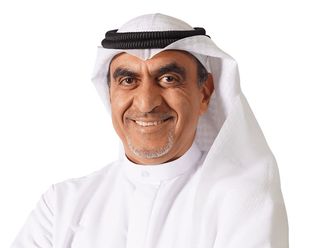Islamic finance migration towards 2.0 can be best described by a quote from Oliver Wendell Holmes, a famous jurist, ‘… great thing in this world is not so much where we stand as in what direction we are moving ...'
Enlightened Islamic bankers and scholars have been commenting for nearly a generation on the need to delink from the interest based economies and its reference rates.
The first step toward delinking is to acknowledge it. The second step, to prevent destabilisation and confusion, is the phased-in process that spells out the sign posts on the road of Sharia-based investments.
The final step is ensuring the vigilance to the methodology and continued refinement.
In 1999, the first Islamic equity index by a globally recognised index provider, Dow Jones Indexes (DJI), was launched, and the industry had an Islamic equity benchmark to measure relative performance of Sharia-compliant companies instead of relying on established broad market conventional indexes like S&P 500 or MSCI World.
In 2006, DJI along with a global bank, Citigroup, launched the world's first Sukuk Index, again, for measuring relative performance instead of relying on emerging market bond indexes.
Scholars have been insisting on moving away from London Interbank Offered Rate (Libor), commonly used as a reference point in contracts for credit pricing.
Where there is a will, there is a way. For example, Islamic mortgages are available in the US, but the reference rate is the US Treasury, which is the only available benchmark.
S&P has the S&P/Case Schiller Home Price Indicies for US Cities for New York, Atlanta, Chicago, which give market-based valuations, based on a transparent methodology.
In theory, it is now possible to use such City indexes as reference rate benchmarks for Islamic mortgages in those cities, as a ‘real economy' link between property prices and mortgages.
A number of well meaning initiatives have been undertaken over the years in an attempt to delink Islamic finance contracts from Libor, to capture the connection to the real economy.
Is it time to repeal the ‘law of necessity' for Libor reference, and apply the same ‘law' to applying contribution rates for Islamic instruments as the beginning of a new paradigm for reference rate points?
Attempts to delink from Libor include local Islamic equity benchmark indexes (volatility issue?), Sukuk Index (trading and transparency?), CPI (frequency of data?), commodity index (volatility), real estate indexes/prices (bubbles, transparency, illiquidity?), in a variety of processes and formulas.
Challenges
While there is a link to the real economy with a sample of the afore-mentioned indicators — these are performance and not pricing measures, for placing and accepting inter-bank Islamic deposits — it presents an obvious challenge. Assuming Islamic fixing is possible, which is not an unreasonable assumption, the next set of issues include panel member banks (which contribute to prices), governance of the Islamic fixing (independent third party), and methodology for calculation and dissemination.
The global capital markets have accepted the transparent process for fixings, from overnight to one year and beyond.
In general terms, a number of panel member banks (16) contribute to pricing before a certain time (GMT) every business day, and the British Bankers Association (BBA) oversee the governance of the pricing to ensure fictitious prices are spotted and those contributing are removed.
The contributed rates are then applied to a formula by Thomson Reuters: removing the outlier top and bottom prices and taking the mean of the median. The rates are then released before noon GMT.
For Islamic finance to showcase its connection to the real economy, authentic and indigenous rates are the answer to the question, ‘what's the difference?' The ensuing financial instruments off of these rates capture the price, pulse, health and direction of Islamic finance.
Islamic finance needs to find its own path, and, a SCIRR, at Holmes' direction, could then be used by the conventional industry as a reference rate as connected to the real economy.
The writer is Global Head of Islamic Finance at Thomson Reuters. Views expressed here are his own and do not reflect that of his organisation or of Gulf News.












